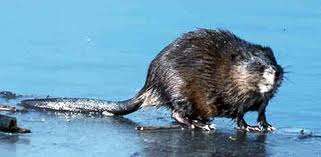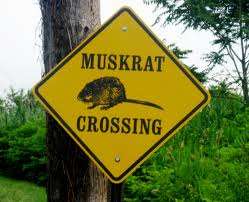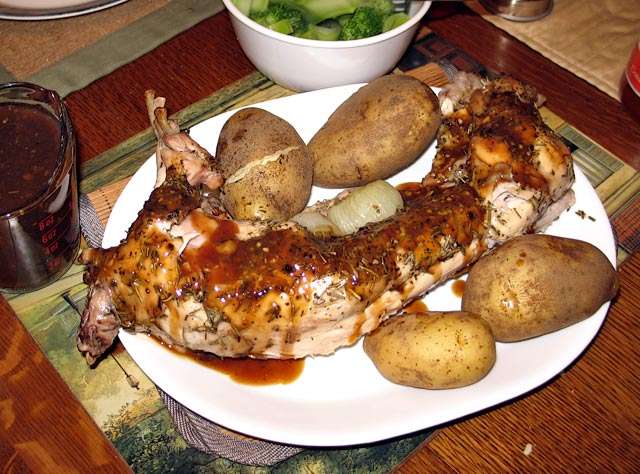GETTING THE BEST OUT OF RATIONING IN 1939 CANADA
Ottawa Declares
Meat of Muskrat
Splendid Eating
1939 article
1939 was not a great year for the Canadians. Rationing was strictly enforced. But tham thar Canadians were a tough bunch, and Muskrats were already being trapped for their fur. Besides, they were good enough for the indigenous peoples, so that was good enough for the average Canadian in the early years of the last war.
In 1939 Â an estimated one million muskrats were being trapped for their fur. Best of all they were not rationed. This article from an Ottawa newspaper dated April 26th 1939.
Â
Like That of Wild Duck
-Not Rationed
Ottawa, April 26 lect .-(CP)-A select few Canadian epicures-there will be more soon-love their meat but look on meat rationing without dismay.
They eat-and boost-muskrat. Ration regulations ignore the muskrat. An estimated 1,000,000 muskrats will be killed for their fur this year in areas relatively accessible to markets. This represents about one-third of the total muskrat crop . The other 2,000,000 will be taken in remote areas by trappers and Indians who have sold the skins and savoured the meat since time immemorial. Resources department officials, some of whom prefer muskrat to tenderloin, cited a publication of the United States fish and wild life service as consolation for those who feel the two-pounds-a-week meat ration will leave them thin and wan : “In recent years persons of refined taste have eaten the flesh of the muskrat and relished it . Some have declared it is game worthy of an epicure, with a flavour somewhat like wild duck that has been shot in the same marsh where it was fed. Its flavour has also been likened to that of the famous terrapin.”
Increase Food Supply
If one-third of the muskrat crop is marketed for food this year, the Canadian meat supply will be increased by about 1,000,000 pounds, as the average dressed weight of the “marsh rabbit” is about one pound. The flesh is dark red in colour but fine grained and tender. . The enthusiasts say the carcass should be soaked overnight in a slightly salted cold water to develop the best, flavour. This done, the favourite recipes call for muskrat fried, wine-fried . smothered in onions, potted or baked, shredded, German style, and stewed. Wild life conservation officials look on increased use of muskrat meat with more peace of mind than they could have in respect to most other wild animals. Muskrat farming has become common in many marsh areas. and trappers who have taken more than they could eat themselves often have been forced to discard the flesh.
“There appears to be some wastage of good meat which should be avoided if at all possible at a time when meat supplies generally are short,” one authority said . One muskrat meat purchaser said he had an arrangement with a trapper to ship him muskrat carcasses in dozen lots during the trapping season, and, with shipping costs included, the price ran about $1.60 for 12 pounds of meat. The trapper dresses the meat after he has skinned the muskrat.
WHAT EXACTLY IS A MUSKRAT?
They are kind of pretty actually. A small rodent that lives in swamps and builds beaver-like houses. They are semi-aquatic and not really ‘rats’. They belong to the species of voles and lemmings. They are not big, but they are one of the biggest of their species, being about 1.5 to 4lbs in adulthood.
During the Great Depression, (and it may be an Apocryphal story) is was said that the Bishop of Detroit, bowing to pragmatism and compassion for the starving, declared Muskrats to be fish. His argument, it seems is that because Muskrats live in water, then they may be described as fish, and can therefore be eaten on Fridays. Wouldn’t it be a lovely story if true?
WANT TO TRY A MUSKRAT RECIPE?
These days the hardest part of preparing a delicious meal of Muskrat might be finding your main ingredient. However, that’s up to you. Bear in mind that there are many ways to prepare a Muskrat dish. Roasted, baked, served with a green vegetable such as cabbage, or with potatoes. Here’s a recipe your intrepid researcher found courtesy of
Pat Carstensen Bell Communications Research, Inc., Red Bank, New Jersey, USA. It is apparently a very easy recipe to prepare once you have obtained your elusive Muskrat.
INGREDIENTS (Serves 4)
3-4 muskrats (all fat and glands removed)
250 g bacon
1/2 bunch celery, chopped
4 onions, chopped
250 g oleo or you can use olive or vegetable oil
2.5 ml cayenne pepper
salt
pepper
600 ml canned tomato soup (2 standard cans)
PREPARATION :
(1) Saute bacon, celery, onions, oleo, and cayenne
pepper together for 10 minutes.
(2) Put rats in bottom of a pan you can cover tightly
(3) Pour sauteed mixture over the rats, and then cover
with tomato soup. (Don’t add water to the soup.
4) Bake, covered, for 21/2 hours at 175 deg. C or until done.
Now, because I live in Australia I can’t provide you with a photograph of the finished epicurean feast. But if you have a spare muskrat or two, and you fancy sending me a picture of this dish, please feel free to send it to me and I will add it to this blog, (with, of course, appropriate credit.)



